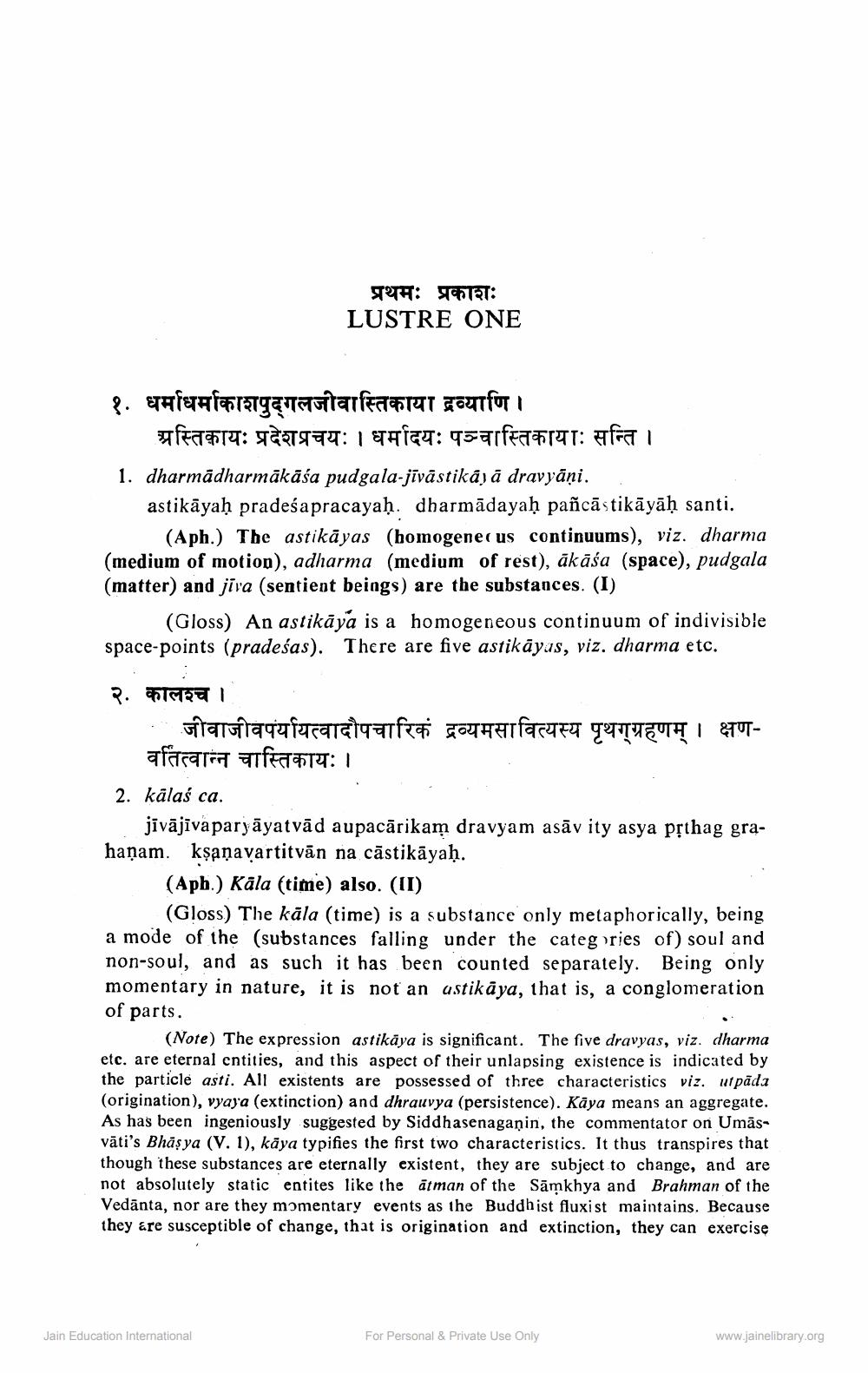________________
प्रथमः प्रकाशः LUSTRE ONE
१. धर्माधर्माकाशपुद्गलजीवास्तिकाया द्रव्याणि ।
अस्तिकायः प्रदेशप्रचयः । धर्मादयः पञ्चास्तिकायाः सन्ति । 1. dharmādharmākāśa pudgala-jīvāstikájā dravyāņi. astikāyaḥ pradeśapracayaḥ. dharmādayaḥ pañcāstikāyāḥ santi.
(Aph.) The astikāyas (homogeneous continuums), viz. dharma (medium of motion), adharma (medium of rest), ākāśa (space), pudgala (matter) and jiva (sentient beings) are the substances. (I)
(Gloss) An astikāya is a homogeneous continuum of indivisible space-points (pradeśas). There are five astikāyas, viz. dharma etc.
P. 153
- जीवाजीवपर्यायत्वादौपचारिक द्रव्यमसावित्यस्य पृथग्ग्रहणम् । क्षण
वर्तित्वान्न चास्तिकायः । 2. kālaś ca.
jivājīva paryāyatvād aupacārikam dravyam asāv ity asya prthag grahaņam. kṣaṇavartitvān na cāstikāyaḥ.
(Aph.) Kāla (time) also. (II)
(Gloss) The kāla (time) is a substance only metaphorically, being a mode of the (substances falling under the categries of) soul and non-soul, and as such it has been counted separately. Being only momentary in nature, it is not an astikāya, that is, a conglomeration of parts.
(Note) The expression astikāya is significant. The five dravyas, viz. dharma etc. are eternal entities, and this aspect of their unlapsing existence is indicated by the particle asti. All existents are possessed of three characteristics viz. ut pada (origination), vyaya (extinction) and dhrauvya (persistence). Kāya means an aggregate. As has been ingeniously suggested by Siddhasenaganin, the commentator on Umāsvāti's Bhāşya (V. 1), kāya typifies the first two characteristics. It thus transpires that though these substances are eternally existent, they are subject to change, and are not absolutely static entites like the ātman of the Samkhya and Brahman of the Vedānta, nor are they momentary events as the Buddhist fluxist maintains. Because they are susceptible of change, that is origination and extinction, they can exercise
Jain Education International
For Personal & Private Use Only
www.jainelibrary.org




